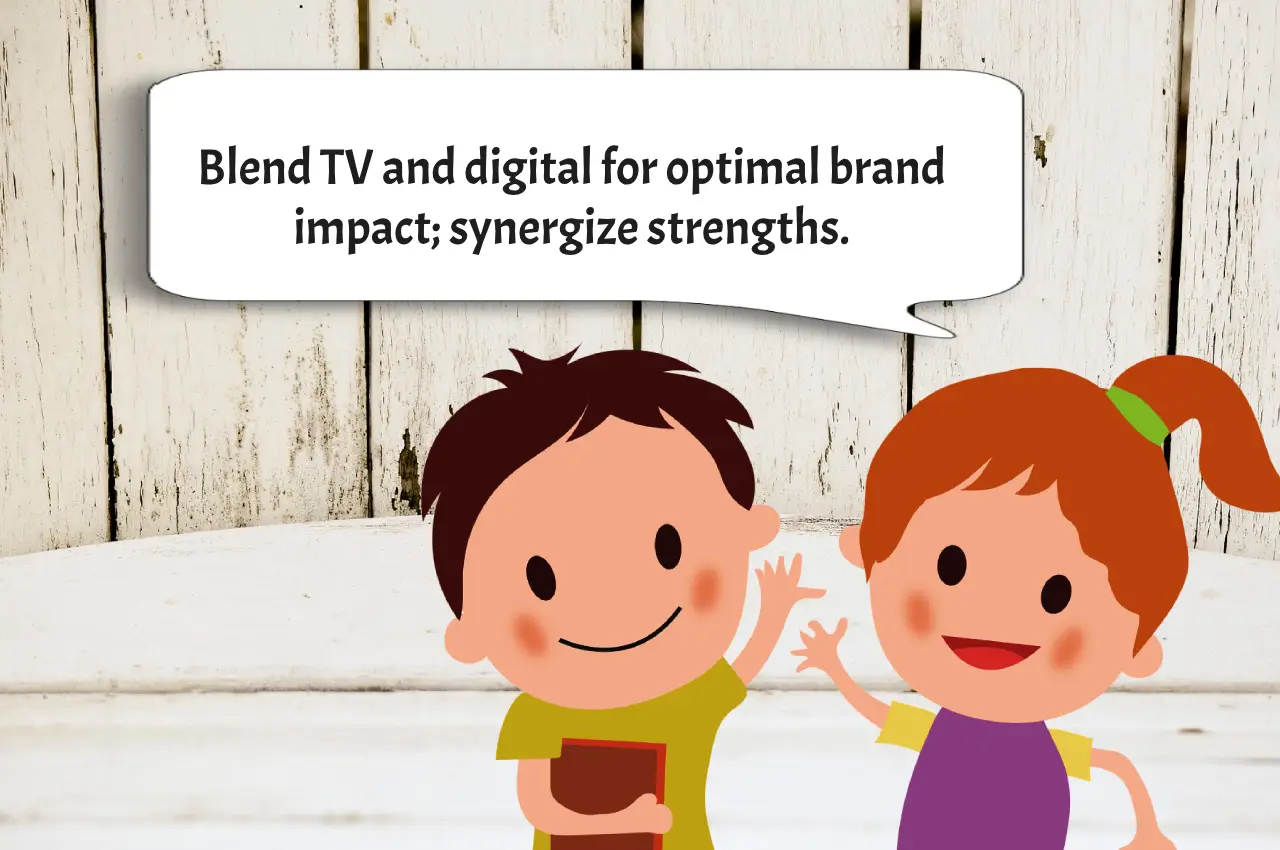In the world of marketing, the clash between two formidable contenders, TV marketing and digital advertising, continues to shape brand strategies. Achieving the right blend is paramount as businesses strive to make a lasting impact. Let’s embark on a journey to unravel the nuances of each and discern how a seamless fusion can elevate your brand’s influence.
The Allure of TV Marketing
1. Commanding Audience Attention:
The legacy of TV marketing lies in its ability to captivate audiences across generations. The living room screen, often the focal point of homes, serves as a potent platform for brand exposure. From emotionally charged narratives to catchy jingles, TV ads possess a unique capability to etch themselves into the collective memory.
2. Trust and Credibility:
TV advertisements inherently carry a sense of trust and credibility. The association with established networks and prime-time slots enhances the perceived reliability of the brand. Viewers tend to develop a deeper connection with a product when it is showcased on their favorite TV show, associating it with quality and dependability.
3. Mass Appeal and Diversity:
The mass appeal of TV is an undeniable strength. It effortlessly reaches a diverse audience, irrespective of demographics. Whether it’s a family sitcom or a live sports event, TV ensures that your message resonates with a broad spectrum of consumers, contributing to widespread brand recognition.
4. Storytelling Mastery:
TV provides an expansive canvas for storytelling. Commercials become mini-narratives, seamlessly weaving emotion and information. A well-crafted story has the potential to linger in the minds of viewers long after the screen fades to black, fostering a sense of brand recall that transcends mere product promotion.
The Digital Advertising Renaissance
1. Precision Targeting and Personalization:
Digital advertising takes center stage for its unparalleled precision targeting capabilities. Through meticulous data analytics and user behavior tracking, businesses can tailor ads to specific demographics, ensuring that the right message reaches the right audience at precisely the right moment. This level of personalization enhances the effectiveness of digital campaigns.
2. Cost-Effectiveness and Accessibility:
In stark contrast to the substantial price tags associated with TV advertising, digital campaigns offer a remarkable level of cost-effectiveness. Small businesses, startups, and even established brands can optimize their budgets by focusing on online channels that provide measurable returns on investment. Digital platforms also offer accessibility to a global audience without the geographical constraints of traditional TV.
3. Real-time Engagement and Interactivity:
The immediacy of digital platforms allows for real-time engagement. Social media comments, shares, and likes provide instant feedback, enabling brands to adapt swiftly to consumer responses. The interactive nature of digital advertising fosters a dynamic relationship with the audience, turning them from passive viewers into active participants in the brand narrative.
4. Analytics-Driven Insights:
Digital advertising is a treasure trove of data. Analytics tools offer in-depth insights into campaign performance, allowing marketers to refine their strategies continuously. This data-driven approach enables brands to make informed decisions, optimizing campaigns throughout their lifecycle for maximum impact and efficiency.
Achieving Synergy: The Path to Success
1. Integrated Campaigns for Seamless Transition:
The sweet spot lies in integration. Crafting campaigns that seamlessly transition between TV marketing and digital advertising platforms ensures a cohesive brand narrative. A TV ad can serve as the spark, igniting curiosity and leading viewers to engage further on digital channels for additional information, exclusive offers, or interactive experiences.
2. Cross-Platform Synergy for Maximum Reach:
Leverage the strengths of both TV marketing and digital advertising by creating cross-platform synergy. Integrate hashtags or social media handles in TV commercials, encouraging viewers to participate in online conversations. This not only extends the reach but also fosters a sense of community around the brand, amplifying its impact.
3. Adapting Strategies to Evolving Behaviors:
As consumer behavior undergoes constant evolution, so should marketing strategies. Keep a finger on the pulse of your target audience’s preferences. If a significant portion of your audience is gravitating towards digital platforms, allocating resources accordingly ensures optimal impact and relevance.
4. Holistic Measurement for Comprehensive Success:
When evaluating campaign success, look beyond individual channels. Holistically measure the impact of both TV and digital efforts. Consider factors like brand perception, engagement rates, and overall market reach to gauge the comprehensive success of your marketing mix. It’s not about TV versus digital but how the two can harmoniously coexist.
In this era of marketing evolution, your insights and experiences are invaluable. Share your thoughts on the TV marketing and digital advertising debate. How do you perceive the impact of each on your brand or the brands you admire? Your voice adds depth to this ongoing conversation. Leave a comment and let’s shape the future of marketing together.





